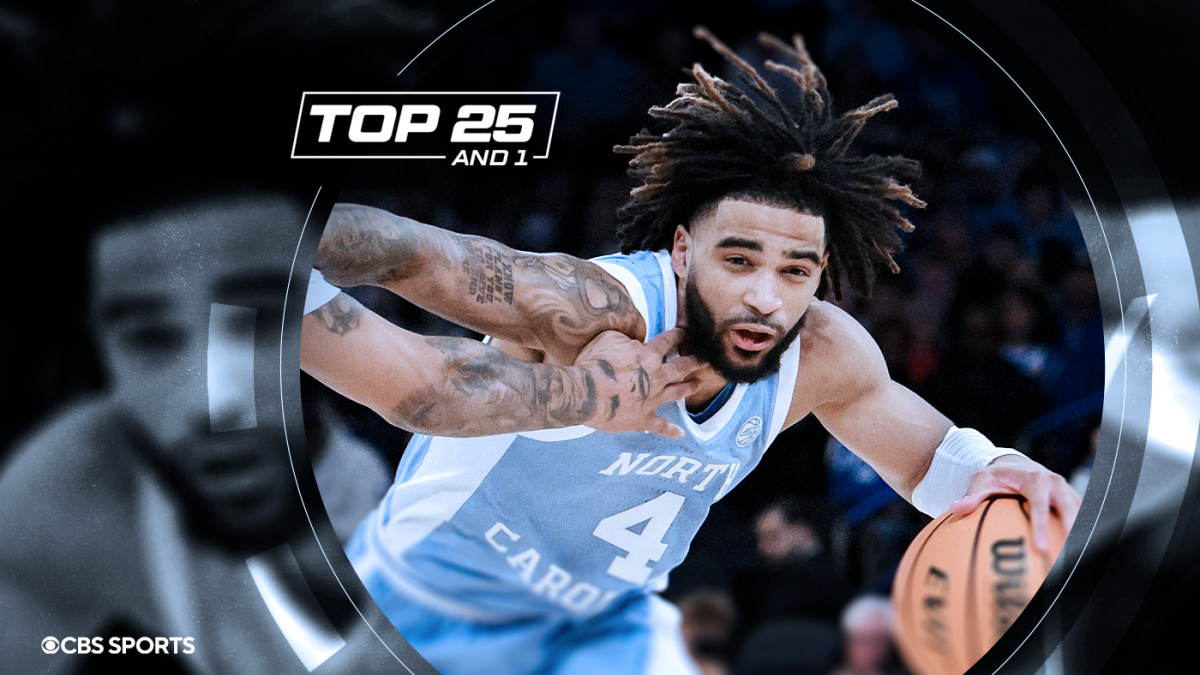World
What the first Women’s World Cup means for soccer in the region

By Steph Yang, Melanie Anzidei and Felipe Cárdenas
Brazil will host the 2027 Women’s World Cup, but the impact could extend far outside the country alone.
The rabid passion for the game exists foundationally across the continent, ingrained in the region’s cultures and while there has been an undeniable growth in women’s soccer in all of South America, it has been fragmented. Whether the region takes full advantage of that passion for the sake of the women’s game, and at what pace, largely depends on the support and infrastructure a country has in place to foster that growth.
Do women players have the support of their federations or are they marginalized? Are they considered professionals? What resources do they have to train or compete? What about the domestic leagues?
The Athletic sought to answer these and questions to shed light on the realities that women soccer player sstill face in South America, soon to host the world’s marquee event in the sport.
A lack of infrastructure and the power of player unions
Having a thriving domestic league is a key marker for the state of soccer in any given country, as is performance at a World Cup. In 2023, the only CONMEBOL nations to qualify for the tournament were Argentina, Brazil and Colombia, the last of which had a historic run, toppling European giants Germany and wowing the world with their blossoming talent.
Each of these teams, though, had more players competing abroad than in their country’s own domestic league, per FIFPRO’s workload journey report.
In South America, most women’s leagues were either founded or turned professional only within the last several years. In some cases, the option to play was through limited competitions over the course of a few months. Even when leagues do exist, pay is likely low or infrequent. Similarly, national team confederations have been notoriously lacking in the treatment of women’s players.
The pace of growth has accelerated since 2019, when CONMEBOL created a rule requiring clubs to have a women’s team to be eligible to compete in the men’s continental club competitions, the Copa Libertadores and Copa Sudamericana.
GO DEEPER
Brazil to host 2027 Women’s World Cup: What we know about their plan
Argentina’s league, for instance, only became professional in 2019 despite the sport being like religion in the country, while the Argentine Football Association (AFA) had a long history of refusing to provide its women’s side with the necessary support and resources. Following the World Cup in 2019, players who spoke up about this were later excluded from the team’s roster, including captain Estefania Banini. She made her return three years later in 2022 after current head coach, German Portanova, took over.
The Argentinian women’s national team had a pivotal World Cup last summer, with growing media coverage, a record level of staff support, more friendlies played in the lead-up and impressive fan turnout fueling attention on the team. Argentina players said this was the most prepared they’ve ever felt for a competition.
In Argentina, the fight for better working conditions for women footballers trickled to the club level when Macarena Sánchez sued her club team, UAI Urquiza, and AFA for the professional status of the sport in February 2019. At the time, players for her club received a $10 monthly stipend for travel and were offered part-time roles. In March, AFA granted the top division of women’s soccer professional status, and by the next year it had unveiled a five-year plan for growing the game. Part of that plan includes steadily increasing the number of professional players per club every year and slowly expanding lower levels of the game through youth teams.
“We can’t start from the bottom because clubs don’t have girls playing soccer at the moment,” Jorge Barrios, the chairperson of the AFA’s Women’s Football Committee, said at the time, “But we can start at the top and work our way down gradually, giving them time so that they can prepare themselves and feed into the system.”
These investments help, said Sophie Braun, an American-born defender for Argentina’s national team.
“We have a dedicated U-20 coach now, whereas we kind of shared the U-20 and the whole team coach in the past,” Braun said. “We’re getting to play more competitive matches, and we’re getting to prepare a lot more before big tournaments. So, that’s been helpful and hopefully it’ll just continue to grow.”

Argentina players said they felt more prepared than ever in 2023 (Zhu Wei/Xinhua via Getty Images)
Similar issues have come to light in Colombia, where in 2019, former internationals Isabella Echeverrí and Melissa Ortiz spoke out against gender discrimination at the hands of the Colombian Football Federation.
“We feel threatened,” Ortiz said.
“The federation has cut off players for speaking up.” Echeverrí added, “They don’t pay us.”
Even after the country’s success at the 2023 World Cup, Colombian officials were still addressing reports that players who had criticized the federation in the past had been blacklisted.
“The statements and actions of several former players have been crucial,” former Colombia international Nicole Regnier told The Athletic. “For the first time, people listened to us about everything that we had endured for over a decade while playing with the national team. Things that didn’t need to happen. The country heard the truth.”
In these and several other instances, players have had to advocate for themselves, eventually leading their federations to make the proper investment needed in women’s soccer. Player unions play a vital role in this, and several have popped up in South America and aligned with FIFPRO, the global players’ union. Last year an estimated 300 women’s players signed a proclamation demanding better working conditions in Uruguay and staged an unprecedented demonstration through their local players’ union, MUFP, and with support of FIFPRO.
[go-dee[er id=”5496367″]
In Chile, women’s soccer became professional in 2022 thanks to a new law enacted by the nation’s president. However, last year, FIFPRO said most of the clubs in Chile breached labor, social security and health and safety regulations, by doing things like not providing work clothes, neglecting to pay social security contributions, or simply not having showers available to players. The inspections that led to FIFPRO’s reporting came after the Chilean player union, ANJUFF, called for an investigation.
“It’s true and in South America and in Europe football is considered a man’s sport,” said Regnier, 29, who played professionally in Colombia, Spain and Switzerland. “I think that’s changing. The level of play in women’s football continues to grow and grow. We’ve managed to earn the respect we deserve, to be treated as professionals. That’s the way it should be.”
But progress is an uphill battle when considering some of the sentiment around women’s soccer in Argentina.
“If AFA were to post a photo of the woman’s games, it’s blown up with comments, like, ‘No one cares. No one wants to watch the women. They can’t play. They’re bad,’” said Braun. “So, I think there’s still a lot of that sentiment, which is super unfortunate, and I know that can be hard to change. But just investing in us and helping us grow is a great way to make that change.”

Corinthians are Brazil’s reigning title-holders and compete in the Copa Libertadores Femenina (Andres Rot/Getty Images)
Challenges of ‘machismo’ culture
By definition, machismo is often described as masculine pride and tradition. Culturally, though, macho behavior leads to misogyny and sexism. Despite its etymology being clearly derived from the Spanish language, machismo culture is a societal behavior that’s present all over the world. It’s certainly not a foreign concept in the U.S.
But because soccer is the sport of choice throughout South America, women’s football and machismo remain in a constant culture clash.
Despite significant progress, the sport is not the game of choice for young girls like it is in the U.S. It varies by country, but in South America, most girls grow up playing a handful of sports other than soccer, like volleyball, tennis, and field hockey — sports that are deemed appropriate by society for women.
The challenges facing women’s soccer in South America, then, are societal and systemic.
In Brazil, soccer was considered not suitable for women and was banned by law for decades. It took until the 1980s for the sport to be authorized and for Brazil’s women’s national team to be born. Eventually, the sport grew domestically to what it is today, with some of the most recognizable names in women’s soccer in Formiga and Marta, and a new generation including Debinha and Kerolin.
The appetite for women’s football in Brazil is only growing. Last year, more than 42,000 fans filled Arena Corinthians in São Paulo to watch Corinthians win the league title, setting a South American record. In many ways, Brazil can be a north star for neighboring countries, where rising stars continue to face uphill battles.

GO DEEPER
Linehan: Why delaying U.S./Mexico Women’s World Cup bid until 2031 makes sense
Colombia national team star Linda Caicedo, 19, plays her club soccer with Real Madrid. She debuted as a professional in Colombia at 14 years old, having spent the majority of her childhood playing against boys.
“There was a lot of machismo, but my parents were wonderful and they backed me,” Caicedo told The Athletic last fall. “They looked for a team for me to play on.”
Regnier had a similar start. She grew up playing in Cali, Colombia as the only girl on a boy’s team.
“It was very odd to see a girl on a football pitch,” Regnier told The Athletic. “I remember my grandmother doing her best to give me dolls and things that she felt were more feminine. It was very difficult because up until I turned 13, I grew up playing with boys.”
Regnier said that she was expelled from a youth tournament in Colombia after a parent from an opposing club filed a formal complaint because of her gender.
“My teammates, the boys, they treated me well because I played well,” remembers Regnier. “They didn’t discriminate against me. It was all on the outside.”
In 2014 at the age of 19, Regnier signed with Atlético Madrid Femenino before Colombia had a women’s professional league. When she signed, the headline in Argentine outlet Clarín read “Atlético Madrid’s gorgeous signing.”
And unlike Caicedo, who reportedly earns a monthly salary at Real Madrid between €25,000 to €38,000 ($27,000 to $38,000), Regnier had to work several side jobs, including as a restaurant server, in order to make ends meet in the Spanish capital.
“I often had a bowl of cereal for dinner because I didn’t have money for anything else,” said Regnier. “I made 800 euros a month in my first contract with Atlético Madrid. My rent, for a tiny apartment, was 500 euros. I had 300 euros to eat and to get around Madrid. Looking back, I appreciate the experience. I’m also glad that the majority of women footballers don’t have to live like that anymore.”

Nicole Regnier played with boys teams growing up with limited other opportunities (Jamie McDonald – FIFA/FIFA via Getty Images)
If women and girls become professional players in South America, they’re often met with vitriol and sexism from the highest levels of the sport.
In 2018, Gabriel Camargo, owner of club Deportes Tolima in Colombia, was accused of homophobia after he said women’s players “drink more than the men” and called women’s soccer “a massive breeding ground for lesbianism.”
Camargo’s comments were condemned in Colombia and throughout South America. Yoreli Rincón, who represented Colombia at the 2015 Women’s World Cup, demanded that Camargo show female players the respect they deserve.
“Don’t forget where your children came from…a woman,” Rincón responded on social media. “Or do you want a (female) player to iron clothes and wash the dishes at your club?”
According to Global Sports Matters in 2023, “The landscape of Colombian football continues to be a dangerous place for girls. Just this past year, families of players at the football academy Club Besser filed criminal charges against owners Pedro Ignacio Rodríguez and Sebastián Esteban Rodríguez. The father and son have been charged with grooming and sexually assaulting underage girls in their club.”
When Regnier returned to Colombia in 2017 from Spain to play in the inaugural season of the league, she did so with the hope that women’s soccer would thrive in her home country.
“I really enjoyed being a professional footballer in Colombia,” Regnier said. “I witnessed the dream of so many players come true, of an entire generation of players who gave everything, up to their last drop of sweat, to help build the women’s professional league. That was worth everything.”

The Brazilian delegation celebrates upon winning World Cup hosting rights (Apinya Rittipo – FIFA/FIFA via Getty Images)
Is Brazil prepared to leverage this World Cup?
For the progress that has already been made, the 2027 Women’s World Cup in Brazil could spur even more sweeping change, if leveraged correctly. That, too would mark a change.
FIFA has largely given the women’s tournament the short shrift evidenced most clearly in the selection of Brazil as a host just three years out, as opposed to the seven years out for the men. FIFA brought in premium grass designed to grow in harsh environments for Qatar while simply leaving in artificial turf for Canada 2015 (They did invest in hybrid grass/turf surfaces for 2023). Women’s tournament merchandise has also frequently come off as an afterthought with extremely limited availability and unpredictable quality.
Prize money still lags behind the men’s, with $440 million total awarded in Qatar compared to $110 million in Australia-New Zealand. FIFA did add a $30,000 pre-tax bonus for every player in 2023, an important step towards financial stability when one in three players participating made less than $30k per year per a FIFPRO survey.
Only recently has FIFA seemed to make more of an effort to invest in the tournament, perhaps realizing that there is money to be made. The tournament in Australia and New Zealand broke even in 2023, claiming over $500 million in revenue and a massive leap in total ticket sales and online traffic.
Brazil’s national women’s domestic league, Brasileirão Feminino, could certainly use these kinds of tangible investments in infrastructure, as could a still-developing player pooll. One can hardly forget Marta’s impassioned plea in 2019 after France eliminated Brazil, telling girls and young women in her home country, “There’s not going to be a Marta forever…. The women’s game depends on you to survive.”

GO DEEPER
In Mexico, greater investment in women’s soccer is starting to pay off
But there has to be enough sustained investment that opportunities for girls to play are not just plentiful, but normalized.
There are signs that Brazil is in a good place to encourage this sort of cultural leverage. President Lula da Silva was supportive of the women’s team during their 2023 World Cup campaign, including extending a policy of allowing federal civil servants to arrive late for work in order to watch women’s national team matches after implementing a similar policy for the men’s national team. Da Silva also publicly endorsed the 2027 bid, saying in March, “It will motivate the construction of a political conscience of the Brazilian people so they understand women’s effective participation in every field they can and want to take a part of.”
Brazilian Football Confederation (CBF) is partnered with huge brands like telecom giant Vivo and international bank Itaú, as well as the global force that is Nike. We’ve seen how sponsors can leverage sports in their favor before, such as Ally going in on women’s sports in the United States and seeing an increase in positive response to their brand image.
Itaú has gone down this path already, including a 2023 World Cup campaign that used artificially generated images of Brazil women’s squads that never existed, but could have but for the country’s 40-year ban on women’s soccer. It’s important to continue emphasizing to commercial partners – and to the rest of the continent – that the women’s game is a good investment, along with oversight to ensure that dollars earmarked for the women’s game actually go to the women’s game.
“It’s a major opportunity for South America to show the world, not just how talented we are, but how much we care about women’s football,” Regnier said. “It’s going to be magical to have a Women’s World Cup in South America. … So many girls begin to play football because of the athletes they look up to, the athletes that they feel close to. That’s so important.”
(Top photo: Getty Images)










